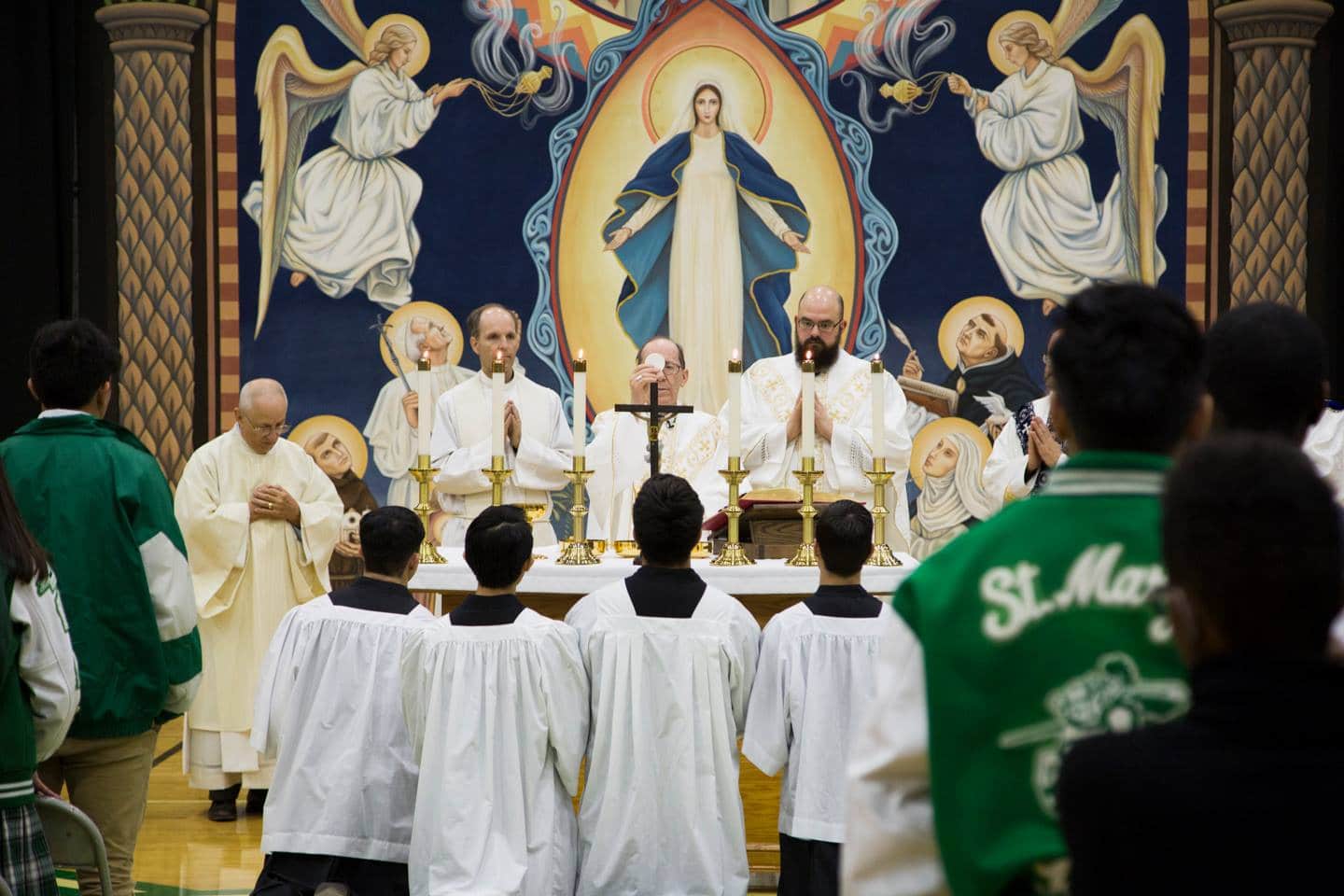Liberal Arts Curriculum
Our curriculum promotes the dialogue between faith and reason and leads students to contemplate Truth, Goodness, and Beauty, seeing in their perfection the God who calls them to ultimate happiness. Our focus on forming students in virtue leads us to strive especially for academic excellence. All truth leads us to Jesus Christ, so a deeper grasp of Truth leads us to a deeper knowledge and love of God. Accordingly, we have made it our mission to provide our students with an excellent liberal arts education that not only prepares them for college and career, but—more importantly—forms them into virtuous young men and women who know the Truth and love the Good.
Traditionally, there were seven liberal arts: grammar, logic, rhetoric, arithmetic, geometry, music, and astronomy. These arts were divided between the trivium and the quadrivium. The trivium (Latin for “three ways”) consists of grammar, logic, and rhetoric. These arts are the prerequisite tools of language that must be mastered before specialized study can begin. In order to make sense of the world, one must be able to talk intelligently about it.
The first of the liberal arts, grammar, is concerned with how to communicate—how to make sense when using words to describe reality. The second, logic, deals with the arrangement of grammatically correct statements into arguments that are true. Rhetoric is the art of persuasion. It teaches how to arrange and present grammatically correct statements and logical arguments in the way most likely to convince an audience to agree with the speaker.
At Saint Mary’s, students explicitly study the trivium as freshmen in their Grammar & Composition class and as sophomores in Speech & Rhetoric class, but because language is the foundation of learning, they employ these liberal arts in all their classes, most especially in their Seat of Wisdom seminar classes, which integrate the study of history and literature while making extensive use of Socratic discussions.
In contrast to the trivium—which deals primarily with language and the communication of ideas—the quadrivium (Latin for “four ways”) equips students to quantify and measure the material world. The quadrivium is concerned with number (arithmetic), volume (geometry), extension in time (music), and extension in space (astronomy). These arts help students recognize patterns that occur in nature and in art and prepare students for all areas of study that make use of pattern recognition. Pattern recognition is universally useful, including the study of medicine, law, finance, all the sciences, and sports. Most importantly, the quadrivium shows students clearly that truth exists and that it can be known with certainty.
These seven arts form the basis upon which all other study is made possible. Through the study of the liberal arts, students learn how to think and how to communicate, how to recognize patterns and how to make connections between subjects. These habits are essential to being a well-formed human being, who not only knows facts and can perform certain functions, but who understands facts and sees their significance in relation to other truths. These habits help our students become wise. The liberal arts help men and women become the best possible versions of themselves.
A liberal arts education alone is insufficient for bringing man to his final, beatific end. As Pope Leo XIII writes in Divini Illus Magistri, “every method of education founded, wholly or in part, on the denial or forgetfulness of original sin and of grace, and relying on the sole powers of human nature, is unsound.” To achieve ultimate happiness one needs God’s grace which comes to us through the Church and her Sacraments. Saint Mary’s is imbued with the Sacramental life and students can receive that grace every day.
Saint Mary’s is uniquely capable of educating the whole person. By providing an education that forms the hearts, minds, and souls of the young in virtue, Saint Mary’s prepares young men and women to be receptive to God’s grace and to recognize Him at work in all things that are good, true, and beautiful.
PUBLICATIONS FEATURING SAINT MARY’S CATHOLIC HIGH SCHOOL
Focus On: Saint Mary’s Catholic High School, Phoenix, AZ – Elisabeth Sullivan
The Renewal of Catholic Education



